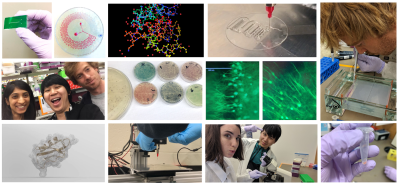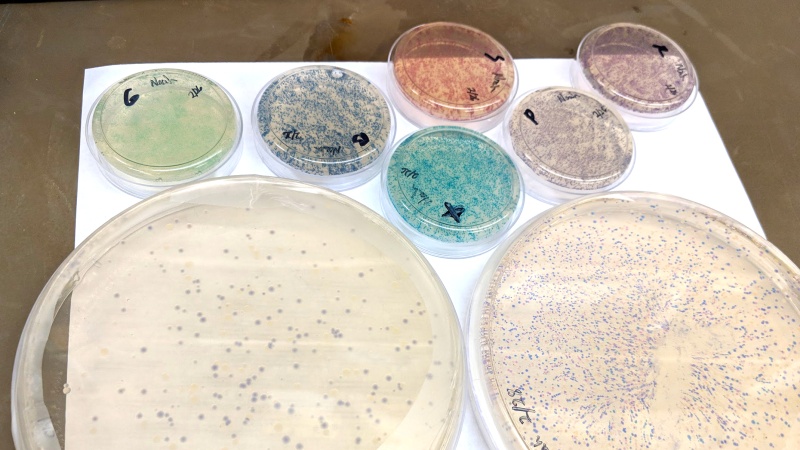An off-shoot of the infamous “How to Make (Almost) Anything” course at the Massachusetts Institute of Technology, “How to Grow (Almost) Anything” tackles the core concepts behind designing with biology – prototyping biomolecules, engineering biological computers, and 3D printing biomaterials. The material touches elements of synthetic biology, ethics of biotechnology, protein design, microfluidic fabrication, microbiome sequencing, CRISPR, and gene cloning.
In a similar fashion to the original HTMAA course, HTGAA works by introducing a new concept each week that builds up to a final project. Students learn about designing DNA experiments, using synthesized oligonucleotide primers to amplify a PCR product, testing the impact of genes on the production of lycopene in E coli., protein analysis and folding, isolating a microbiome colony from human skin and confining bacteria to image, printing 3D structures that contain living engineered bacteria, and using expansion microscopy (ExM) to visualize a mouse brain slice. The final projects run the gamut from creating a biocomputer in a cream to isolating yeast from bees.
Growing out from an initiative to create large communities around biotechnology research, the course requires minimal prior exposure to biology. By working directly with hands-on applications to biodesign concepts, students are able to direct apply their knowledge of theoretical biology concepts to real-world applications, making it an ideal springboard for bio-inspired DIY projects. Even though the syllabus isn’t fully available online, there’s a treasure trove of past projects to browse through for your next big inspiration.

















I can’t find it now but I saw an advert in the back of a magazine (not that kind of mag don’t worry) for a DIY home CRISPR kit!
I was blown away at the prospect of loosing the home chemistry set and gaining the home crispr set.
Unfortunately I didn’t buy it don’t recall it’s name and doubt it’s much use.
The idea was you sent away a base sequence (or picked from a catalogue) and then made the vector at home and it also came with bacterial spores!
Here we go.
https://www.the-odin.com/diy-crispr-kit/
Not too shabby for under $170
https://www.newscientist.com/article/dn311-killer-mousepox-virus-raises-bioterror-fears/
My professional space got pretty spun up over this. The long and the short of it: A couple of Australian guys cooked up an altered version of a pox virus that just tore through the mouse population in their area. Decimated is literally the wrong word. It destroyed the endemic population.
This happened at a time when the US was facing very real biological weapon concerns (Amerithrax, and the aftermath of 9/11). Some folks were very excited about “Those damned Australian hicks” (Who turned out to be some pretty interesting guys).
https://www.ncbi.nlm.nih.gov/pmc/articles/PMC2816623/
The furor was just dying down when this happened:
https://en.wikipedia.org/wiki/2003_Midwest_monkeypox_outbreak
Relevant because the kit that they used to perform the manipulation was purchased online, and was available to pretty much anyone (and offered the ability to perform experiments in your kitchen).
‘The Thought Emporium’ on youtube does a lot of interesting bio stuff too with about equal parts of interesting electronics projects that overlap occasionally
Out of curiosity, why is the HTMAA course considered infamous?
Learn how to grow almost anything: take a course at MIT.
Gee, thanks.